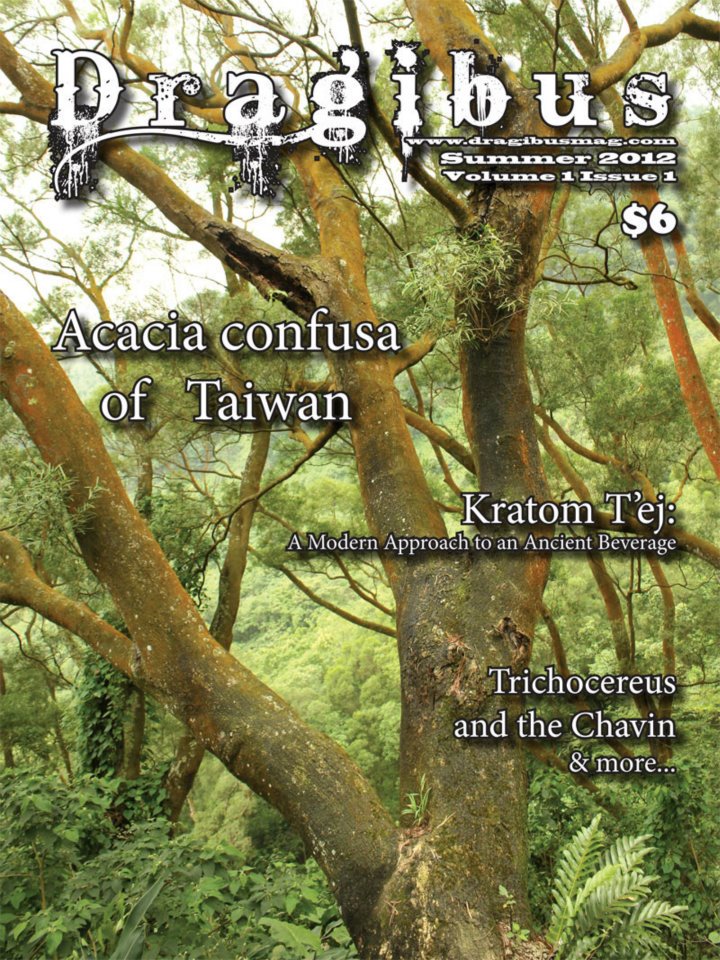Recently, as humans have experimented more, the use of Acacia confusa bark has been used as a DMT source for Ayahuasca. Ayahuasca is a hallucinogenic drink originating from South America. Traditionally, the drink contains the leaves of Psychotria species (usually P. viridis) and the stems of Banisteriopsis caapi. Psychotria species are often the plant that contains the hallucinogenic compound DMT. >>More
Kratom T’ej: A Modern Approach to an Ancient Beverage
While searching for something that could satisfactorily replace hops in my brewing, I experimented with quite a few plants and herbs. I was surprised to find how many plants can fill the same role as hops. Just as hops impart their own flavor and character to a brew, there are many herbs that can lend a very nice flavor to your beverage and also alter the effects of the brew. As I discovered more recipes for herbal beers I also found that many entheogens have a long history of use as brewing adjuncts. I compiled a list of entheogenic plants that are commonly used in brewing, and I noticed that there was one absent that surprised me. Mitragyna speciosa, or kratom (pronounced ka-tom), seemed to have no history as a brewing adjunct. In retrospect this is not terribly surprising as there is a complete lack of information as to the traditional use, if any, of this plant by people native to the areas in which it grows. To me this was an exciting moment. I got to be the first person, even if only in my own little world, to make a brew with kratom. >>More
Trichocereus and the Chavin: A love story
To say that the people of Peru have an intimate relationship with the San Pedro cactus would be unjust. Love spewed out of the green flesh and into the veins of their ancestors, exploding into a ray of light that opens even modern day consciousness. Tune in my friends because there is a story here to be told. A story of such magnitude, that 3000 years have not changed much of its story. >>More

Shamanistic Art of the Americas
From earliest times to today, indigenous peoples of the Americas have valued shamanic visionary trance as one of their most important cultural and religious experiences. In Mesoamerica, Central America, and the Andes shamans still speak of their wondrous trance journeys to other cosmic realms, the truths they learn, and the information they bring back to cure their communities’ ills. >>More
Salvia Divinorum And The Illusion Of Our Existence
Despite its reputation as the world’s most potent natural ‘hallucinogen’ (100-200 times stronger than LSD) very little is known about it, even by the shamans who should know best. There are no creation myths that tell of its origin, for example, unlike ayahuasca where shamans have legends to explain the plant, or San Pedro, where curanderos tell of the hummingbird bringing the secrets of God to Earth in the form of the cactus2. The Mazatecs even lack an indigenous name for Salvia. Their method of consuming it does not efficiently utilise its psychoactive content and they seem genuinely unaware of its potency. For example, Maria Sabina used it in her healing and divinatory practice only when mushrooms were out of season; commenting that ‘the hojas do not have the same strength’. For an entheogen 200 times stronger than LSD, that’s some oversight. >>More
Flavonoids: The over looked ingredients
We all know about the alkaloids in psychoactive brews such as Ayahuasca and Cimora. However, is there an overlooked ingredient in some of the plants utilized, which have been previously thought to not be psychoactive or the psycho-activity being attributed solely to the alkaloids? The answer is a resounding yes and that ingredient is flavonoids. >>More

